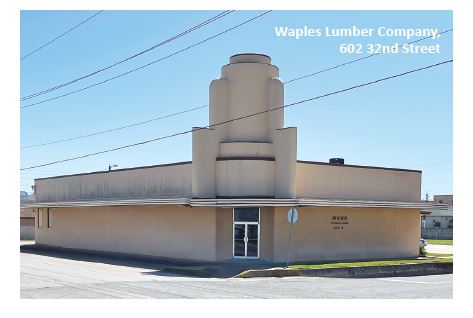 Galveston Island is known for having one of the largest and well-preserved concentrations of Victorian architecture in the United States. What many people don’t realize is that the island also is the site of some sterling examples of the Art Deco and Streamline Moderne styles of architecture.
Galveston Island is known for having one of the largest and well-preserved concentrations of Victorian architecture in the United States. What many people don’t realize is that the island also is the site of some sterling examples of the Art Deco and Streamline Moderne styles of architecture.
The period of design often referred to as “Art Deco” is more accurately broken down into two related—but different—design influences or styles: Art Deco and Streamline Moderne.
The earlier style, dubbed Art Deco, is extremely rare in domestic architecture in America, but many Deco interiors were designed and built, most prominently, in apartment complexes, such as those found in the Art Deco Historical District in Miami Beach, Florida, located between 5th Street and 23rd Street.
The latter style, dubbed Streamline or Streamline Moderne, is most often found in commercial, institutional, and public buildings, many of which can found on Galveston Island, said Dwayne Jones, executive director and CEO of the Galveston Historical Foundation.
“Art Deco refers to designed buildings, furniture, etcetera, mostly from the late-1920s and 1930s, inspired by Arts Décoratifs—International Exhibition of Modern Decorative and Industrial Arts—held in Paris in 1925, and have more embellished elements applied to facades,” Jones said.
“The other is referred to as Streamline or Streamline Moderne. The latter design is influenced by developing styles with curved elements, circular windows and bands of texture that all suggest motion.”
Jones said this period of architecture can be found in some of his favorite Galveston landmarks, including The Santa Fe Building at the corner of 25th and Strand, once the Union Passenger Depot, which he considers to be “the city’s best example of real Art Deco.”
The Galveston Historical Foundation’s involvement in preserving and restoring these structures is keen, especially when it comes to those structures on its endangered list, but saving these historic structures is a community effort—a three-way partnership between community support, the business community, and the foundation.
“Many of the most important buildings are privately owned. This requires a mixed load of incentives for reinvestment,” Jones said, adding he considers the seemingly Herculean task of preservation to be a personal mission.
“I have always had a strong interest in history and architecture. I believe in what we do and why we are here.”
GHF owns the Santa Fe Building (Shearn Moody Plaza) and are managing it and actively preserving it for the community, he said. But there are others that require public and private support.
“This important period of design often gets overlooked here and elsewhere. While the number of Art Deco and Streamline buildings are limited, places like the Santa Fe Building are iconic buildings for our downtown and community,” he said.
“They tell an amazing history and connect our history to the places that we actively use today.”